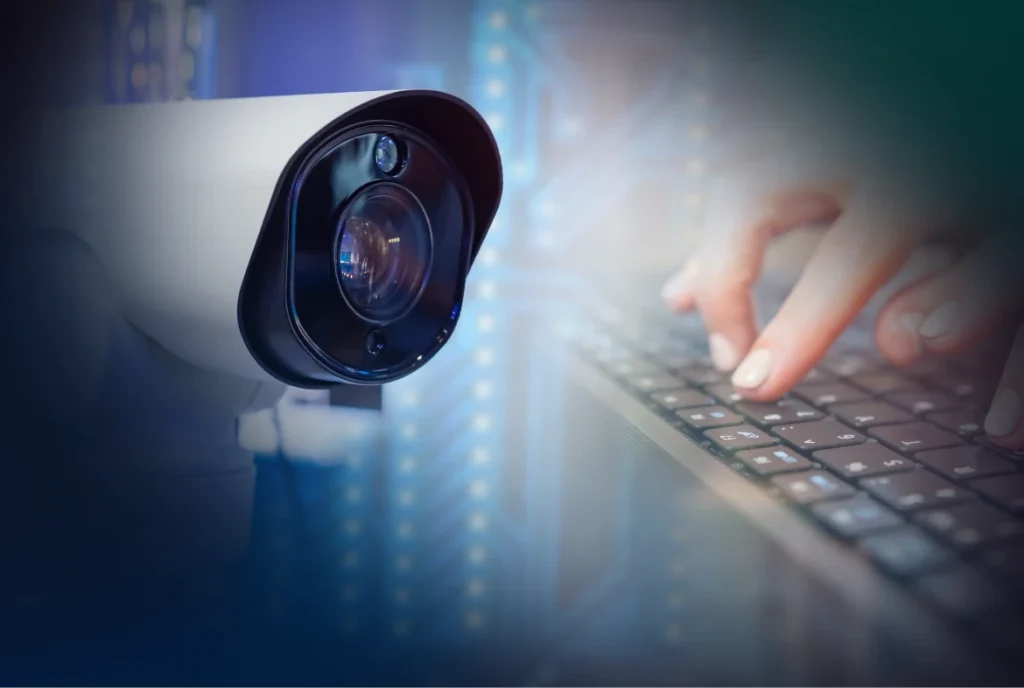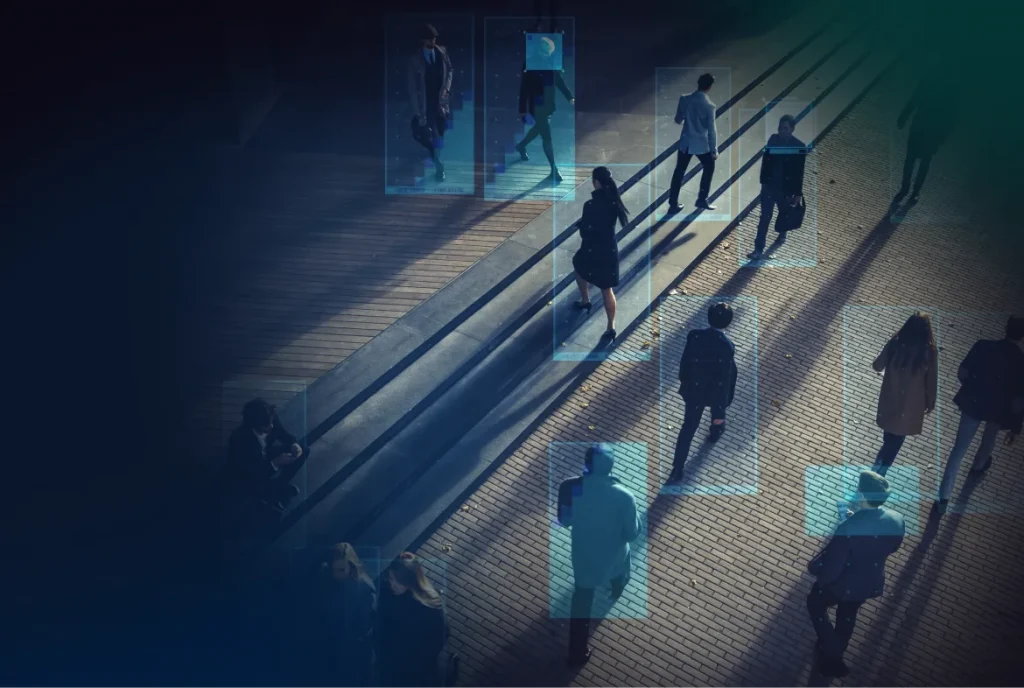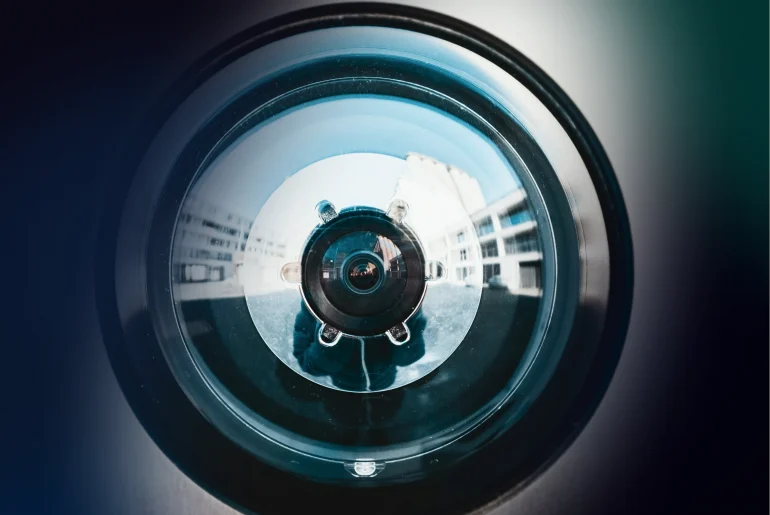Video surveillance has been pivotal to keeping many spaces safe for many years. Let’s imagine a crowded retail center with plenty of exits and entries. Mall management has the combined challenges of directing customers’ flow and keeping everything running smoothly. Hence, the mall can efficiently track the number of customers in certain zones by using video surveillance with people counters. Mall administration may monitor foot traffic to and from the facility as well as to individual businesses and food courts by analysing video footage from strategically positioned cameras. The result? With this information, they can see how busy it becomes at certain times of day and adjust their personnel and security accordingly. Mordor Intelligence estimates that the people counting system industry will grow at an accelerated CAGR of 12% between 2021 and 2026. Modern VSaaS solution stands to make businesses not only safer but optimized in the resources.
Traditionally, incident investigations could take extensive amounts of time and resources. However, cloud video surveillance has revolutionized this process. A comprehensive comprehensive AI-based events video archive search allows for a quick review of incidents, precisely capturing the sequence of events and providing invaluable insights that can help accelerate the investigation process.
However, the effectiveness of video surveillance hinges on factors such as the number of cameras monitored simultaneously and the attention span of the operators. As operators’ concentration naturally diminishes over time, their awareness and overall surveillance efficacy decrease. AI-based Image video analytics systems have boosted video surveillance efficiency by automating monitoring and alerting operators to important events through visual cues and sound notifications.Integrating AI and advanced analytics in video surveillance systems empowers the identification of certain events automatically, immediately alerting the concerned authorities and helping to respond swiftly to incidents. Moving forward, we will explore one of the applications of the video analytics AI case to increase efficiency, namely, people counting.
Uncovering the Installation & Quality Requirements for Modern VSaaS solution
Both the camera’s technical specifications and the environmental conditions in which it operates are equally important. Careful consideration is required for all parts of the system, including software as well as server hardware. Multiple key factors come into play, as resolution is not solely determined by higher pixel count, since it may require more computing power for processing. Camera settings such as shutter speed, frame rate, and wide dynamic range significantly impact image quality.
Likewise, the camera should operate effectively in its environment and actual installation point. Consideration of use cases, and optimized designs tailored to challenging environments are also important factors in ensuring optimal performance and accurate results.

AI & VSaaS – the Ultimate Convergence for Video Surveillance
With deep learning’s shift from pixel-based analytics to AI-based detection and classification, key events may be discovered much more quickly and accurately. Moving forward, the security sector will shift from reactive to proactive. AI-driven VSaaS platforms drive a significant edge over conventional security systems, offering numerous benefits:
· Precision. The exceptional detection accuracy of AI-integrated VSaaS systems undoubtedly contributes to minimizing false alarms. This accuracy translates to swift response times and, consequently, safer environments.
· Proactivity. While using AI-enhanced analytics, VSaaS platforms shift from reactive to proactive measures. They possess the ability to discern certain configured events in advance of incidents, ensuring timely preventive action.
· Responsibility Transfer for Infrastructure Health & Scaling. When opting for a VSaaS service, the burden of maintaining and scaling the infrastructure is shifted to the vendor, easing management tasks for the user. As Anna Boudinot emphasizes for SDM, “VSaaS is a win-win for integrators since it alleviates burdens and risk of deploying physical solutions, such as reliance on local infrastructure.”
· Unlimited Processing Resources. There is virtually no limit to processing power due to emerging affordable computing options in the cloud, allowing for smooth and efficient operation even with heavy data streams.
· Cost-Efficiency. Alongside these advantages, the scalability and adaptability of API-based VSaaS support smooth integration with existing infrastructure, delivering economical solutions without compromising security.
· Deploying Complex Deep Learning Algorithms. These algorithms analyze video streams effectively, identifying certain events for improved security.
Exploring the People Counting Technological Scenarios
Pardeamean et al. (2022) define people counting as “an automatic system that counts the number of people captured in CCTV footage. It has been applied to numerous cases.” People counting within specific boundaries serves to enhance efficiency across various industries.

Healthcare – It aids in enforcing regulatory restrictions in industrial production sites and medical institutions, ensuring safety and compliance. In high-risk infectious zones, such as those prone to COVID-19 or other viruses, people counting can help manage and limit exposure.
Retail – Similarly, retail outlets can use this technology to monitor queues and optimize their cash desks and staff deployment. Event venues can employ it to identify popular and congested spots for better crowd management. Integrating with Third-Party Systems – Data from people counting integrated with third-party systems, providing valuable statistics for further analysis and processing by various software and systems.
Outdoor Venues – People counting assists in monitoring real-time traffic patterns, preventing overcrowding, making decisions on access points, and analyzing outdoor visitor trends to optimize facility usage and local retail traffic.
Airports – Airports could employ people counting systems to regulate the number of individuals present in a specific area, such as during the process of loading and unloading passengers. This technology allows airports to monitor real-time fluctuations in traveller density, enabling them to allocate staff resources efficiently. Historical data can be used as well to predict future traffic patterns. This fact help making informed decisions regarding expansions for heavily utilised access and traffic points.
Counting People & Compliance
It is important to note that counting people in regions with regulatory restrictions on the length of stay at production locations presents a unique difficulty. Thus, to prevent congestion and preserve a secure working environment, these restrictions, imposed for safety and compliance reasons, seek to limit the number of individuals present in these areas. To ensure compliance with these regulations, accurate counting becomes vital. Why? This data facilitates compliance with regulatory restrictions and provides valuable insights for resource allocation efficiency and overall site management.
Deploying Aipix VSaaS solution for People Counting
Aipix VAS platform, as a Modern VSaaS solution, emerges as a ready-made solution designed to quickly launch Video Surveillance as a Service (VSaaS) and new security services. Empowered by its advanced AI-based video analytics solution, Aipix facilitates people counting, with customizable count zones and comprehensive statistics. Whether for operational or security purposes, Aipix facilitates the process and provides dependable and valuable insights for improved monitoring and efficiency.
Aipix’s architecture structured:
- Multi-tenancy, which allows to serve different types of subscribers and different segments. Each user getting their isolated video analytics system with their own management and access rights;
- Flexible video analytics framework for rapid deployment of new business cases;
- Unlimited scalability – no limit on the number of processed video analytics streams;
- CPU-based calculation;
- 100% fault tolerance;
- Web-based architecture, so end-users can access the applications using various devices, including desktops, tablets, and smartphones, promoting accessibility and flexibility.
Video analytics broadens the smart-security services range to include intercoms, access control and management systems.
This enables the creation of zones with customizable people-count thresholds, offering visual representations of count statistics and trends over time. Venues like airports, museums, or conference centers can gain comprehensive insights through real-time alerts and operational data in the sidebar. These notifications serve to keep them apprised of developments and occurrences within specific areas. On top of that, the system keeps track of times when the population density is over a certain level. It makes simple to search for and retrieve information on previous events in certain locations.
To conduct its analytics computations, modern VSaaS solution like Aipix utilizes CPU, presenting an added advantage of using existing hardware resources efficiently. The platform is perfect for AI-powered VSaaS services like People Counting. It ensures fault tolerance, unlimited scalability, and extensive video surveillance. Additionally, it supports comprehensive video analytics systems, enhancing security and operational efficiency. Moreover, systems aren’t restricted by territorial spread or analytic video streams number. It makes Aipix an optimal solution for various video surveillance needs.
People Counting – a Trailblazing Video Analytics Solution.
People counting is an essential solution for accurately assessing and allocating resources. It ensures efficient utilization in businesses, healthcare, industrial operations, and retail environments.
Precise people counting using video surveillance is crucial for improving efficiency and safety across diverse sectors. This technology accurately measures metrics like queue lengths, staff in production areas, and occupancy in high-risk zones of healthcare facilities. Such insights enable optimized resource use, streamlined operations, and the implementation of targeted safety protocols. By applying people counting in settings like factories, hospitals, and retail environments, businesses enhance operational efficiency and ensure safer conditions for everyone.
Unlock the power of cloud video surveillance with Aipix Modern VSaaS solution — our experts are here to help you get started.
Get your "Advantages of Launching Video Analytics as a Service with Aipix"
Leave your e-mail and we’ll send you the file





